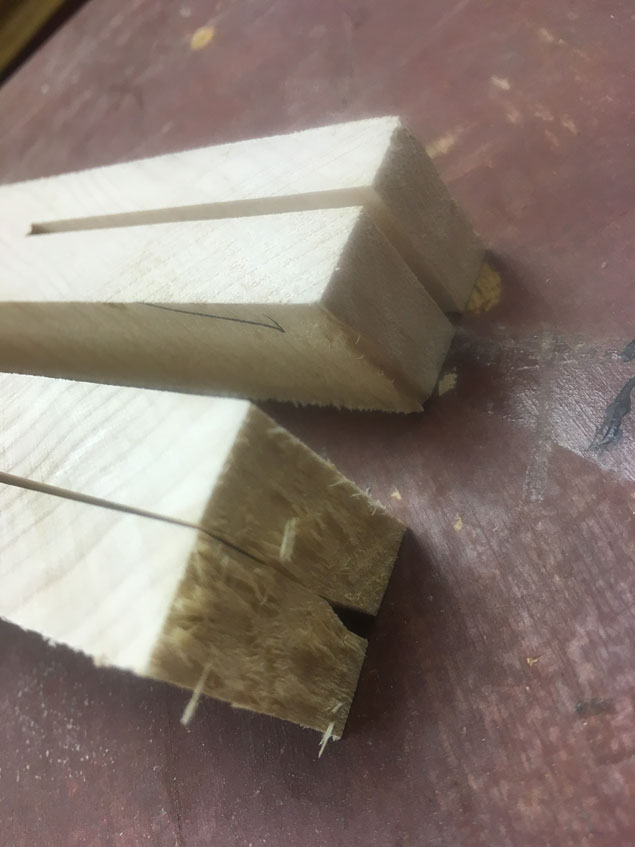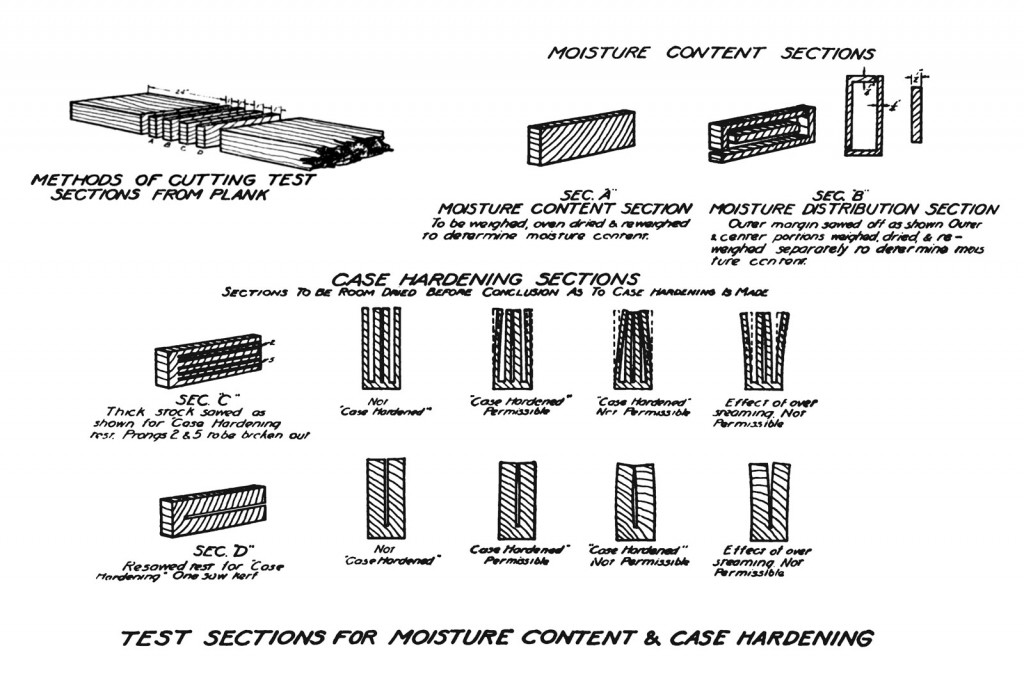We may receive a commission when you use our affiliate links. However, this does not impact our recommendations.
Thanks to the long-term relationships I’ve made with lumber merchants, I have little trouble with them sending me crappy stock. But even after 20-something years of buying wood from my suppliers, there are times when I get a bogus load of wood.
Most problems can be solved by knowing what is standard in the industry. About 15 years ago, I bought 200 board feet of cherry from my dealer that was advertised as 4/4 rough and came into my shop at 13/16” thick in the rough.
I put my foot down and sent it back about five minutes later. After a tense standoff the dealer backed down and sent me true 4/4 stock, which should be more than 1” thick. Since that day, they have always sent material that meets industry specs.
But sometimes I get a load that has a fair number of case-hardened boards. I actually don’t blame the dealer (directly) for this defect – the kiln is in charge of this aspect of quality control. Recently I bought a lot of hard maple, and about 20 percent of the boards were case-hardened. That’s nuts. How do you prove it to the dealer?
At this point, I can take the junk boards back and ask for a credit. But if your dealer balks, Jeff Burks offers this excellent and simple test set forth by the U.S. Forest Products Laboratory.
Starting about 2’ from the end of a board, crosscut 1”-long sections of the board in question. Then kerf the samples like you are making a fork and observe what happens.
Specific instructions are found in this bulletin:
Excerpt from – Technical_Notes_on_Wood_Properties_and_U333
Tonight I grabbed two of the maple boards from that load. One of them has been giving me fits. I performed the official test and the “tines” of the fork slammed shut immediately, indicating the board was case-hardened or had some unacceptable internal stresses. With the other board (a mild example) the tines remained parallel.
I threw the samples into my truck (along with the offending board) so I could have a future friendly discussion with the timber merchant. I know they’ll say it’s not their doing, but I also know they’ll make a phone call to the kiln or mill where they got the maple.
You might think I’m a jerk for doing this, and that’s OK. I just don’t want to pay $5 a board foot for firewood.
— Christopher Schwarz
Here are some supplies and tools we find essential in our everyday work around the shop. We may receive a commission from sales referred by our links; however, we have carefully selected these products for their usefulness and quality.











Totally not a jerk move. I refuse to produce and sell an inferior product and I expect the same from other business owners. If a customer is not thrilled I do not expect them to pay. I’m in a position that I realize other business owners may not be in, but I would expect lumber dealers to have good enough relationships and high enough standards that they would either be able to recoup their loss from the mill that screwed up or take the hit themselves and find another mill if that mill is going to sell garbage. Of course, mistakes happen and we’re dealing with a natural product, but just do the right thing. Did you play the “don’t you know who I am?!” card? LOL.
My Grandfather had cheese factory back a 100 years ago. There were two grades and milk, A ad B. When the farmers bought milk less than grade A but better than B, he would give them grade A price. He felt sorry for those poor farmers. So the the farmers bought their A and B milk to the other cheese makers then then put on their shabbiest clothes and sold their middle milk to that old fool Van Ess, He was the first cheese maker to good out of business when Kraft monopolized the market. You accept an inferior product and it becomes the new standard of an acceptable product. The Mill can sell that wood to someone else that will take an inferior product.
Well I learned something, I have never heard of case hardening before but I recognize the consequences. I always thought it was just the result of a board cut from a tree with ‘funny’ grain.
This is why I read these blog posts.
PJ
You are not being a jerk. And the dealer should not think you are either. The alternative is, if they don’t know, you will keep receiving firewood. Until you go to a different dealer. Certainly they don’t want that.
I found out about case hardening the hard way.
I was building a Dutch tool chest using home center construction grade lumber. One of the boards I purchased was long, straight, and flat–I could not believe my luck. I cut several pieces from the board and called it a night after milling them. Life happened and could not get back to them for several days. The cut boards turned into pretzeled caricatures of wood.
The guy that explained case hardening to me also said you can relieve the stress if you plane both sides of the board. I have no idea if this is true as my research ended with the PDF file I posted in reply below (above?).
Regardless, I see no problem with returning the crap wood.
how does case hardening work? too little time in the kiln? overcrowding? and is there a reliable way to keep from choosing it when i’m actuall at a lumber yard picking my own? (moisture meter, right?)